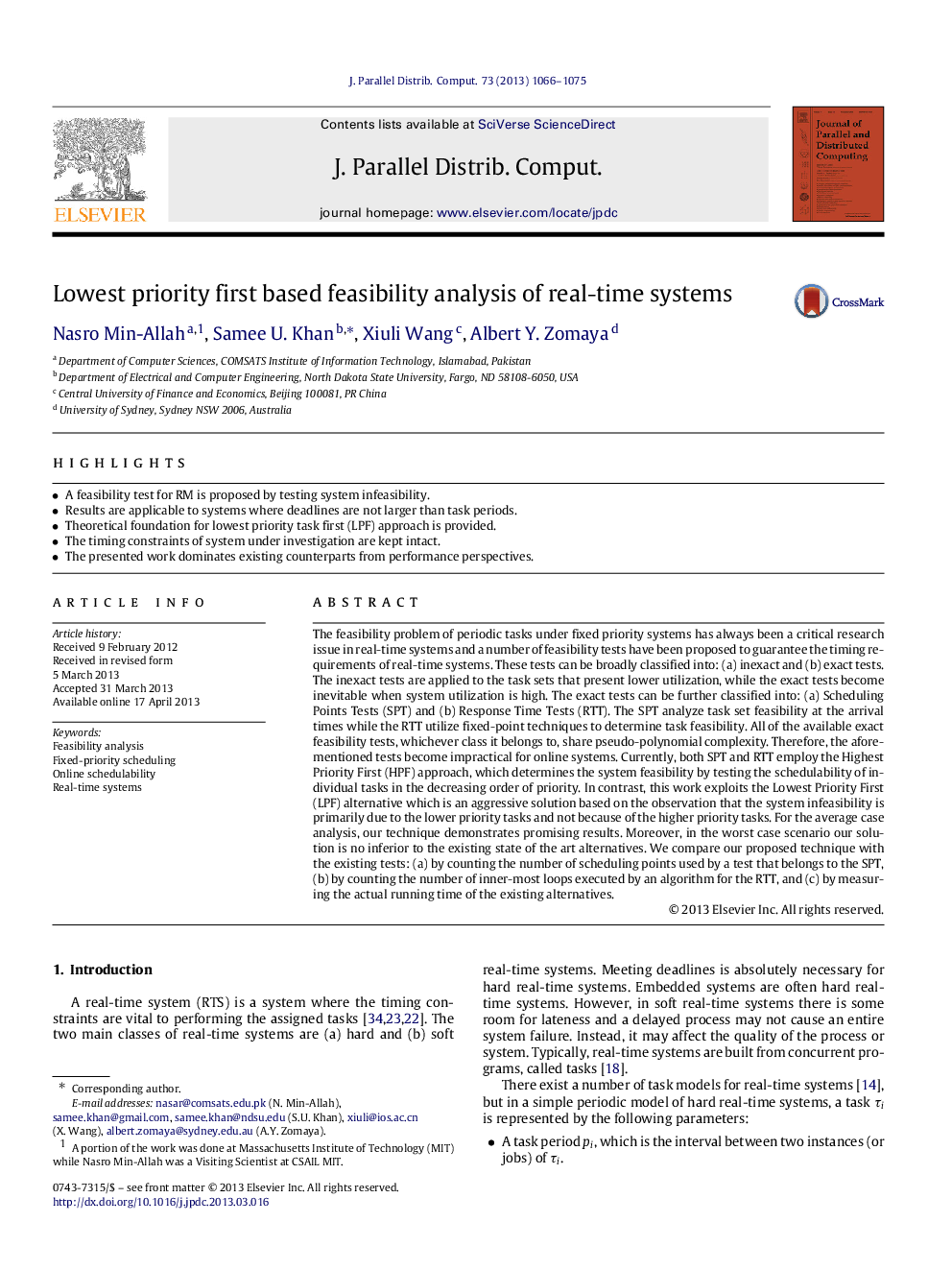| کد مقاله | کد نشریه | سال انتشار | مقاله انگلیسی | نسخه تمام متن |
|---|---|---|---|---|
| 431831 | 688638 | 2013 | 10 صفحه PDF | دانلود رایگان |

• A feasibility test for RM is proposed by testing system infeasibility.
• Results are applicable to systems where deadlines are not larger than task periods.
• Theoretical foundation for lowest priority task first (LPF) approach is provided.
• The timing constraints of system under investigation are kept intact.
• The presented work dominates existing counterparts from performance perspectives.
The feasibility problem of periodic tasks under fixed priority systems has always been a critical research issue in real-time systems and a number of feasibility tests have been proposed to guarantee the timing requirements of real-time systems. These tests can be broadly classified into: (a) inexact and (b) exact tests. The inexact tests are applied to the task sets that present lower utilization, while the exact tests become inevitable when system utilization is high. The exact tests can be further classified into: (a) Scheduling Points Tests (SPT) and (b) Response Time Tests (RTT). The SPT analyze task set feasibility at the arrival times while the RTT utilize fixed-point techniques to determine task feasibility. All of the available exact feasibility tests, whichever class it belongs to, share pseudo-polynomial complexity. Therefore, the aforementioned tests become impractical for online systems. Currently, both SPT and RTT employ the Highest Priority First (HPF) approach, which determines the system feasibility by testing the schedulability of individual tasks in the decreasing order of priority. In contrast, this work exploits the Lowest Priority First (LPF) alternative which is an aggressive solution based on the observation that the system infeasibility is primarily due to the lower priority tasks and not because of the higher priority tasks. For the average case analysis, our technique demonstrates promising results. Moreover, in the worst case scenario our solution is no inferior to the existing state of the art alternatives. We compare our proposed technique with the existing tests: (a) by counting the number of scheduling points used by a test that belongs to the SPT, (b) by counting the number of inner-most loops executed by an algorithm for the RTT, and (c) by measuring the actual running time of the existing alternatives.
Journal: Journal of Parallel and Distributed Computing - Volume 73, Issue 8, August 2013, Pages 1066–1075